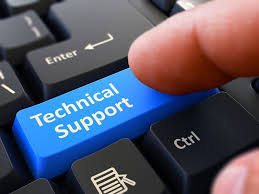The resumption of Nvidia’s AI chip sales to China has become a pivotal moment in the ongoing US-China tech war, one that may shape the trajectory of global innovation for years to come. Following a strategic meeting between Nvidia CEO Jensen Huang and former U.S. President Donald Trump, export restrictions were loosened, allowing Nvidia to sell certain AI chips to Chinese firms once again. This unexpected decision not only altered the semiconductor landscape but also brought new energy into the high-stakes competition over artificial intelligence dominance.
But how did we get here? And what does this move really mean for technology, innovation, and geopolitical power?
Backdrop: The Nvidia US-China Tech War Explained
The US-China tech war isn’t just about trade—it’s a battle for technological supremacy in areas like AI, quantum computing, 5G, and semiconductors. For years, the U.S. has imposed sanctions and export restrictions on Chinese tech firms such as Huawei, ByteDance, and many others. These actions were often framed around national security and intellectual property concerns.
The 2022–2024 period saw a sharp escalation, particularly in semiconductor exports. U.S. companies like Nvidia were blocked from selling their most powerful AI chips—such as the A100 and H100—to Chinese customers. This caused major disruptions in China’s AI development and significantly impacted Nvidia’s revenue from Asia.
Nvidia Role in the Global Tech Ecosystem
Nvidia stands at the center of the AI revolution. Its GPUs are essential for training and deploying large-scale machine learning models. Whether it’s ChatGPT, autonomous vehicles, or robotics, chances are Nvidia’s hardware is behind the scenes.
China, being a major global player in AI development, represents a huge market. Before the export ban, Chinese tech giants like Alibaba, Tencent, and Baidu were among Nvidia’s key customers. The sudden halt created a vacuum—one that domestic Chinese chipmakers struggled to fill quickly.
Turning Point: The CEO-Trump Meeting
In mid-2025, Nvidia’s CEO met privately with Donald Trump during a tech policy summit. Shortly after the meeting, news broke that Nvidia had received special export permissions to sell modified AI chips to China. While these chips are said to be restricted in performance to comply with U.S. regulations, the move signaled a shift in U.S. policy.
The political optics are just as important as the technical ones. This meeting showed that strategic business diplomacy can lead to policy change—even amid ongoing geopolitical friction.
What This Means for Global Innovation
Now that Nvidia can sell AI chips to China again, the entire tech world is watching. The implications are vast, affecting innovation pipelines, investment, and even AI safety.
1. Acceleration of AI Development in China
With access to Nvidia’s advanced chips—even in a modified form—Chinese tech companies can accelerate their AI efforts. This could lead to faster progress in areas like language models, AI healthcare, facial recognition, and surveillance technologies.
2. Pressure on Local Chinese Chipmakers
While the export ban initially encouraged China to develop domestic alternatives, Nvidia’s return could delay that progress. Companies like SMIC and Biren now face tough competition again, possibly pushing them back to the drawing board.
3. Global AI Competition Intensifies
The U.S., Europe, and China are all racing to dominate the AI landscape. With Nvidia back in China, the competition has a new layer of complexity. Innovation might speed up globally, but so will concerns over AI misuse and regulation.
4. New Wave of Collaborative Innovation?
Although unlikely in the short term, Nvidia’s re-entry into China could spark new partnerships between Western and Eastern AI developers—especially if regulations remain flexible.
Risks and Criticism Of Nvidia
Of course, not everyone supports this decision. Several U.S. lawmakers and analysts argue that re-opening exports—even partially—undermines national security objectives. The fear is that these AI chips, even when limited in speed or performance, can be used in military or surveillance programs.
On the flip side, Nvidia and its supporters emphasize that these modified chips adhere strictly to export regulations and cannot power high-end military AI.
This fine line—between economic growth and security concerns—is one the U.S. government will need to walk carefully moving forward.
Impact on the Semiconductor Industry
The semiconductor sector is already experiencing ripples from this decision.
- AMD and Intel: These Nvidia competitors may lose any edge they briefly gained in China during Nvidia’s export ban.
- Taiwan and South Korea: As key manufacturing hubs, they may benefit from increased chip demand, even as tensions remain high in the Taiwan Strait.
- Global Supply Chains: The move helps stabilize the volatile chip supply chain, which has been under pressure since the pandemic and U.S.-China sanctions.
How Businesses Should Respond
For businesses in AI, cloud computing, and digital transformation, this development offers both opportunity and caution.
- Tech companies can consider expanding into Asian markets where AI infrastructure will grow quickly again.
- Investors may find Nvidia stock and related semiconductor plays more attractive due to expected revenue rebounds.
- Startups should monitor how access to AI hardware may change depending on their geographic location and compliance requirements.
Strategic Takeaways for Policymakers
- Balance is Key: A rigid export policy may stifle U.S. innovation if American companies are blocked from global markets.
- Collaboration with Industry Leaders Matters: The Nvidia-Trump meeting shows how direct dialogue between business and government can shape policy outcomes.
- Prepare for Tech Diplomacy: Future global power will be dictated not just by military or economic might, but by tech leadership. Diplomacy must evolve accordingly.
Conclusion: Nvidia A New Chapter in the Tech War
The US-China tech war is far from over, but Nvidia’s renewed presence in China marks a significant development. It signals that even amid tension, compromise is possible when economic, technological, and political interests align.
For innovators, this could mean faster progress. For policymakers, it’s a reminder that tech regulation must remain agile. And for the world, it’s proof that the battle for AI dominance is not just about hardware or software—but about who sets the rules for the digital future.
FAQs: Nvidia, China, and the US Tech War
Q1: Why were Nvidia’s AI chips banned from being sold to China?
The U.S. imposed export restrictions citing national security concerns and the potential military use of advanced AI chips.
Q2: What changed that allowed Nvidia to resume sales?
After a high-level meeting between Nvidia’s CEO and Donald Trump, special permissions were granted to sell modified chips that comply with U.S. regulations.
Q3: How will this affect China’s AI development?
China will now have access to more powerful AI hardware, potentially accelerating progress in language models, cloud AI, and more.
Q4: Will this affect global innovation?
Yes. The return of Nvidia to the Chinese market could increase the speed of AI advancements globally due to higher competition and access to better chips.
Q5: Are these the same chips Nvidia sells in the U.S.?
No. The chips sold to China are modified to comply with U.S. export rules and have performance limitations.
Q6: What are the risks of this move?
Critics warn that even limited chips could be used for surveillance or military purposes. It also risks weakening the pressure to develop domestic alternatives.
Q7: What should businesses do now?
Companies should monitor chip availability, regulatory updates, and AI development trends in both the U.S. and China to stay competitive.






